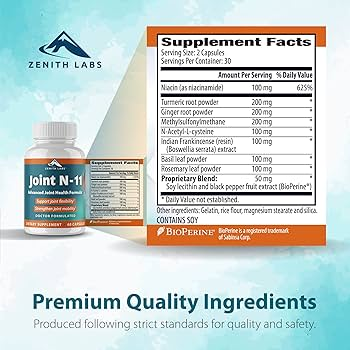Joint N-11 Review:
Introduction to Joint N-11
The Joint N-11 Review is an essential process for any organization looking to enhance collaboration and drive performance. But what exactly does it involve, and why should you care? This review serves as a powerful tool that brings together key stakeholders to evaluate practices, share insights, and identify areas for improvement. Whether you’re part of a small team or a large enterprise, conducting this review can lead to significant benefits.

Imagine streamlining your operations while fostering better communication among teams. That’s the promise of a well-executed Joint N-11 Review! In this step-by-step guide, we’ll walk you through the entire process—from setting clear goals to developing actionable plans that get results. Ready to dive in? Let’s explore how you can make the most out of your Joint N-11 Review experience!
Benefits of Conducting a Joint N-11 Review
A Joint N-11 Review offers a wealth of advantages for organizations striving for improvement. First and foremost, it fosters collaboration among stakeholders, creating a shared vision and common goals.
By engaging multiple perspectives, the review uncovers insights that might be overlooked in individual assessments. This holistic approach leads to more robust solutions.
Another significant benefit is enhanced accountability. When teams work together during the review process, they’re more likely to take ownership of their roles and responsibilities.


Moreover, conducting this type of review can improve communication channels within the organization. Open dialogue encourages transparency and trust among team members.
Additionally, identifying strengths through this collaborative effort allows organizations to leverage these assets effectively while addressing areas needing enhancement. The result? A stronger foundation for future growth and success in achieving strategic objectives.
Preparing for the Review Process
Preparing for the review process is crucial to ensure a smooth and effective Joint N-11 Review. Start by gathering all relevant documentation, such as past reports and metrics. This information will serve as your baseline.
Next, assemble a diverse team that includes members from various departments. Different perspectives lead to richer insights during the review.
Set aside time for brainstorming sessions where everyone can share thoughts on what has worked well in the past and areas needing improvement. Encourage open dialogue to foster an environment of trust.
Create a timeline with clear milestones leading up to the actual review day. This helps keep everyone accountable and makes sure nothing falls through the cracks.
Step 1: Set Goals and Objectives
Setting clear goals and objectives is crucial for a successful Joint N-11 Review. It provides direction and focus for the entire process. Without defined targets, it’s easy to lose sight of what you aim to achieve.
Begin by involving all stakeholders in the conversation. This ensures that everyone’s input is valued and considered. Discuss potential outcomes, such as improved collaboration or enhanced data insights.
Next, prioritize your goals based on urgency and importance. Are there specific areas needing immediate attention? Identifying these will help streamline efforts during the review.

Make sure your objectives are SMART—Specific, Measurable, Achievable, Relevant, and Time-bound. Doing this creates a roadmap that guides every step taken throughout the review process.
Document everything clearly. Written goals serve not just as reminders but also benchmarks against which progress can be measured later on in your journey through the Joint N-11 Review.
Step 2: Gather and Analyze Data
Gathering and analyzing data is a critical step in the Joint N-11 Review process. Begin by collecting relevant information from various sources. This could include reports, performance metrics, and financial statements.
Utilize both qualitative and quantitative data to gain a holistic view. Look for trends that may reveal underlying issues or opportunities within your organization.
Once your data is collected, it’s time to analyze it thoroughly. Identify key patterns that can inform decision-making. Use charts or graphs for visual representation; they often make complex information easier to digest.

Engage team members in discussions around the findings. Their insights can provide context that numbers alone cannot convey, making the analysis more robust than ever before.
This collaborative approach fosters transparency while ensuring everyone has ownership of the review process as you move forward with actionable strategies based on solid evidence.
Step 3: Conduct Interviews or Surveys
Conducting interviews or surveys is a vital part of the Joint N-11 Review process. This step allows you to gather qualitative insights directly from stakeholders. Their perspectives can uncover nuances that data alone might miss.
Choose your participants carefully. Aim for a diverse group that represents various viewpoints within the organization. This diversity enriches your findings and ensures broad coverage of opinions.

Create open-ended questions to encourage detailed responses. Yes-or-no questions often limit discussion, so be mindful of how you frame inquiries. Flexibility in interviews can also lead to unexpected discoveries.
Make sure to document everything meticulously. Notes or recordings will help capture essential details for later analysis. Engaging with participants builds rapport, which may lead them to share more candidly about their experiences and suggestions.
The goal here is not just gathering information but fostering an environment where everyone feels heard and valued in the review process.
Step 4: Identify Strengths and Weaknesses
Identifying strengths and weaknesses is a pivotal part of the Joint N-11 Review. This step offers valuable insight into how well your organization performs against established benchmarks.
Start by reviewing the data collected earlier. Look for trends that highlight areas where you’re excelling. Recognizing these strengths can foster team morale and drive further success.
Conversely, pinpointing weaknesses is equally essential. These are not just shortcomings; they represent opportunities for growth. Use qualitative feedback from surveys or interviews to add depth to your analysis.

Engage stakeholders in discussions about both aspects during workshops or meetings. Diverse perspectives often reveal insights you might have overlooked alone.
Document everything clearly, so everyone involved understands their role in the overall strategy moving forward. This transparency will be crucial as you transition into developing actionable plans later on in the review process.
Step 5: Develop Action Plans for Improvement
After identifying strengths and weaknesses, it’s time to translate insights into actionable steps. Developing a clear action plan is crucial for improvement.
Start by prioritizing the areas that need the most attention. Focus on specific issues rather than vague goals. This makes it easier to measure progress over time.

Assign responsibilities to team members or departments. Clearly defined roles ensure accountability and foster ownership of the process.
Set realistic timelines for each action item, incorporating milestones along the way. These checkpoints help maintain momentum and provide opportunities to adjust strategies when necessary.
Communicate your plans with all stakeholders involved. Transparency encourages collaboration and commitment across the board. Everyone should be aligned with the objectives set forth in your Joint N-11 Review process.
Tips for a Successful Joint N-
Conducting a Joint N-11 Review can be a transformative experience for organizations. To ensure your review is productive, keep these tips in mind.
First, involve all relevant stakeholders from the beginning. This fosters collaboration and ensures everyone’s input is valued. Establish clear roles to prevent confusion during the process.
Second, maintain open communication throughout the review. Regular check-ins allow teams to address any challenges promptly and stay aligned with goals.

Third, prioritize data integrity by using reliable sources and methods for analysis. Accurate information will significantly influence your findings and recommendations.
Fourth, remain flexible in your approach. If certain steps aren’t yielding results or new insights emerge, don’t hesitate to adjust your plan accordingly.
Celebrate small wins along the way! Recognizing progress boosts morale and motivates participants to stay engaged through each phase of the review process.
By following these strategies, you set yourself up for a successful Joint N-11 Review that drives meaningful improvement within your organization.




